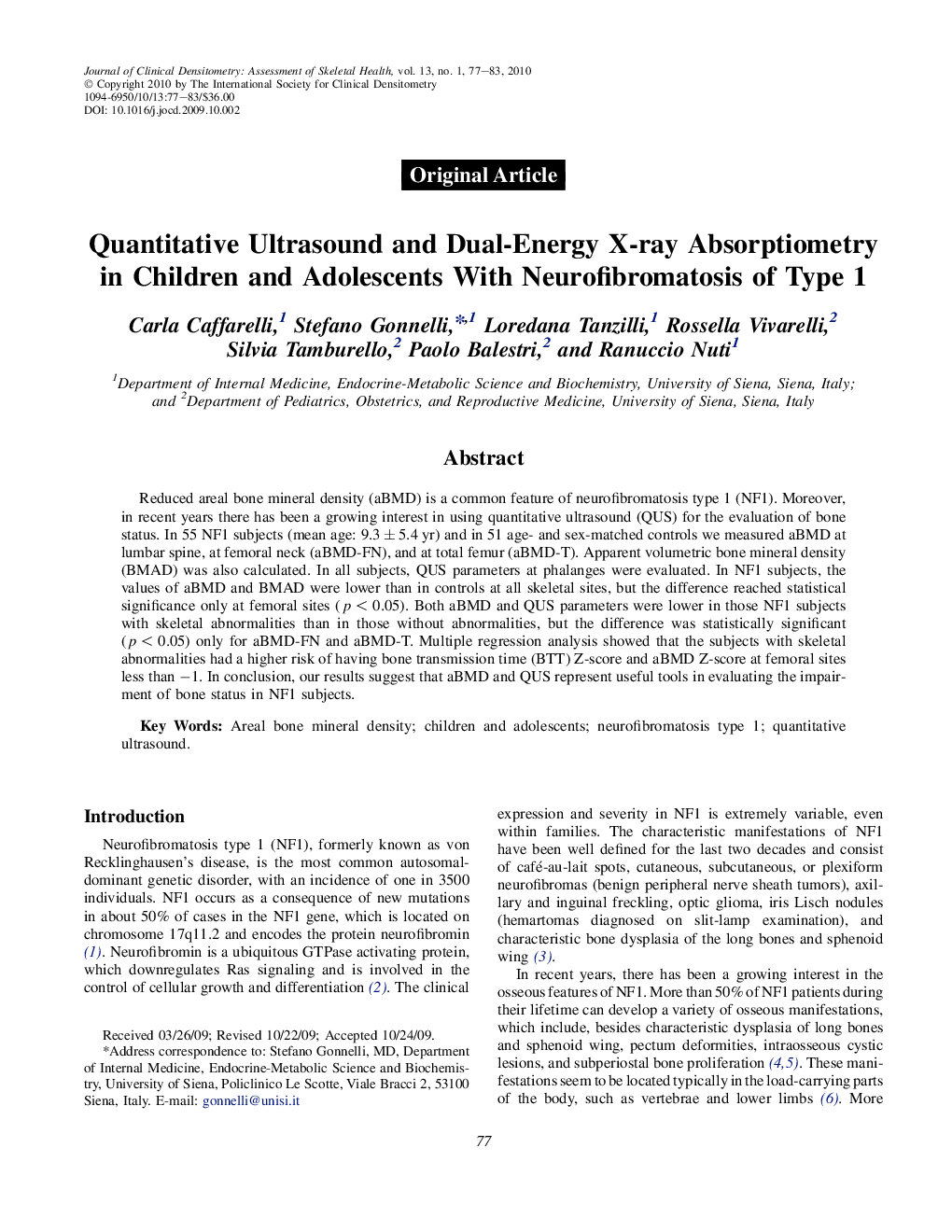| Article ID | Journal | Published Year | Pages | File Type |
|---|---|---|---|---|
| 3271568 | Journal of Clinical Densitometry | 2010 | 7 Pages |
Abstract
Reduced areal bone mineral density (aBMD) is a common feature of neurofibromatosis type 1 (NF1). Moreover, in recent years there has been a growing interest in using quantitative ultrasound (QUS) for the evaluation of bone status. In 55 NF1 subjects (mean age: 9.3 ± 5.4 yr) and in 51 age- and sex-matched controls we measured aBMD at lumbar spine, at femoral neck (aBMD-FN), and at total femur (aBMD-T). Apparent volumetric bone mineral density (BMAD) was also calculated. In all subjects, QUS parameters at phalanges were evaluated. In NF1 subjects, the values of aBMD and BMAD were lower than in controls at all skeletal sites, but the difference reached statistical significance only at femoral sites (p < 0.05). Both aBMD and QUS parameters were lower in those NF1 subjects with skeletal abnormalities than in those without abnormalities, but the difference was statistically significant (p < 0.05) only for aBMD-FN and aBMD-T. Multiple regression analysis showed that the subjects with skeletal abnormalities had a higher risk of having bone transmission time (BTT) Z-score and aBMD Z-score at femoral sites less than â1. In conclusion, our results suggest that aBMD and QUS represent useful tools in evaluating the impairment of bone status in NF1 subjects.
Keywords
Related Topics
Health Sciences
Medicine and Dentistry
Endocrinology, Diabetes and Metabolism
Authors
Carla Caffarelli, Stefano Gonnelli, Loredana Tanzilli, Rossella Vivarelli, Silvia Tamburello, Paolo Balestri, Ranuccio Nuti,
